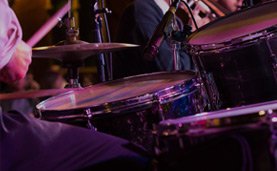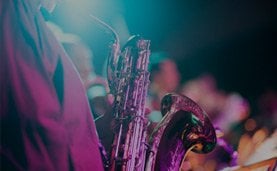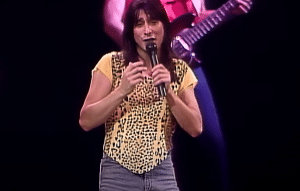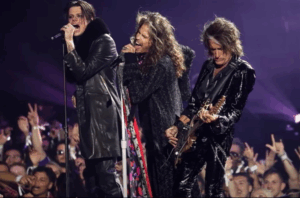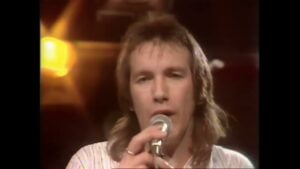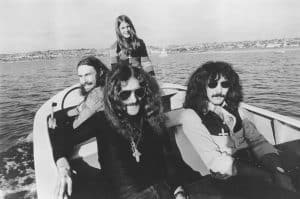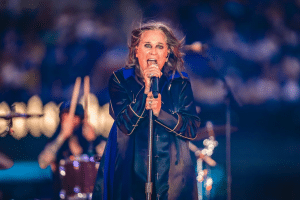Not Everyone’s a Fan: What Eric Clapton’s Old Bandmates Have Said About Him Over the Years
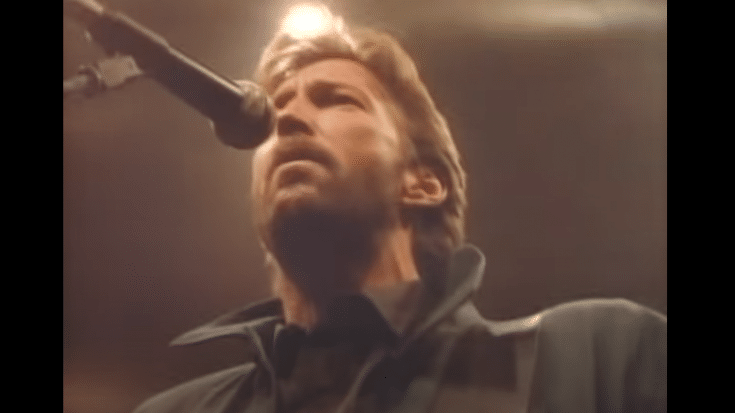
via Eric Clapton/YouTube
Eric Clapton is without a doubt one of the most influential guitarists in rock history. Known for his soulful playing and legendary tone, he’s been a major force in shaping classic rock since the 1960s. While his solo career really took off in the ’70s, Clapton always seemed happiest as part of a band—surrounding himself with other greats. Over the years, he’s been a key member of powerhouse groups like the Yardbirds, Cream, Blind Faith, and Derek and the Dominoes. And that’s not even counting his countless collaborations with blues icons and fellow rock legends—including ties to The Beatles.
But with a career that long and high-profile, things are bound to get complicated. Clapton’s life has been full of triumph, tragedy, and controversy. Some musicians consider him a genius; others can’t stand him, especially after some of his more infamous public statements. Here’s a look at what Clapton’s former bandmates have had to say about the man behind the music—the brilliant, confusing, and polarizing Eric Clapton.
Chris Dreja
In the early 1960s, young British guitarists were falling hard for American blues, and many started blending those gritty sounds with electric rock. One of the first bands to really run with that idea was the Yardbirds. Chris Dreja was part of the group early on, playing rhythm guitar. When original lead guitarist Anthony “Top” Topham left, a young Eric Clapton stepped in—and everything changed.
From the start, Dreja could tell Clapton was something special. “He used to rehearse phrases for a weekend or a week at a time,” Dreja told Classic Rock Radio in 2005. “He was very much a journeyman. But he had charisma, no doubt. He’d reinvent himself every month—style, fashion, everything.” The two guitarists also bonded on a personal level, thanks to their shared art school backgrounds and quirky sense of humor.
“He introduced me to a ton of blues and taught me a lot,” Dreja recalled to Vintage Guitar in 2009. Their time together may have been brief, but it left a lasting impression on both of them—and helped spark the British blues-rock boom.
Paul Samwell-Smith
Long before the Yardbirds took shape, Paul Samwell-Smith was in a British group playing Memphis-style blues. At one gig, a young guy in the crowd came up to him with some brutally honest advice—and that guy turned out to be Eric Clapton. “Eric was in the audience and said, ‘Do me a favor—don’t try and play guitar,’” Samwell-Smith recalled to Let It Rock in 2022. “He thought it was dreadful—and I think he was right.” Taking the feedback to heart, Samwell-Smith switched to bass—and that decision changed everything.
He was the Yardbirds’ bassist when Clapton joined in 1963, and while Samwell-Smith eventually stepped away from performing to focus on producing, his time with the band still draws attention. He believes the Yardbirds owe much of their legacy to their iconic guitarists. “Eric Clapton, Jeff Beck, and Jimmy Page—that’s really the main reason people still care,” he said. “The Yardbirds are getting a bit of a resurgence now, and people are starting to take them seriously.” Not bad for a guy who just needed the right instrument.
Jim McCarty
Eric Clapton’s time with the Yardbirds was short but memorable—just two years, from 1963 to 1965. So why did he walk away? According to drummer Jim McCarty, it all came down to musical direction. When the band scored a hit with the catchy, radio-friendly “For Your Love” in 1965, Clapton wasn’t thrilled. “That was part of it—quite a big part,” McCarty told the Arizona Republic in 2018. “He didn’t like that we were going pop instead of staying with the blues… He didn’t really want to be part of a team. I think he was destined to be his own guy.”
Clapton’s departure made room for Jeff Beck to join the band, and honestly, McCarty didn’t seem too heartbroken over the switch. In fact, he found Clapton kind of difficult to work with. “Eric had these R&B songs he wanted us to do. Him leaving was a relief,” he told The Guardian in 2007. “He’d just sit in the van, not talking to anyone. He was so moody—we were fed up with it.”
John Mayall
John Mayall, inducted into the Rock & Roll Hall of Fame in 2024, is often called “the godfather of British blues”—and for good reason. As the driving force behind John Mayall & the Bluesbreakers, he became a mentor to a long list of future rock legends, including Mick Fleetwood, Peter Green, John McVie of Fleetwood Mac, and of course, Eric Clapton. After leaving the Yardbirds in 1965, Clapton was eager to play raw, electric blues, and Mayall’s band was the perfect fit.
At first, Mayall wasn’t blown away by Clapton. “He wasn’t that remarkable,” he admitted in a 1991 interview. “But if you were a blues fan seeing the Yardbirds, Eric was the one you’d watch.” That changed quickly once Clapton joined the Bluesbreakers. Living in a spare room at Mayall’s house, he spent hours listening to records from Mayall’s massive blues collection. “It was just remarkable how quickly he progressed,” Mayall said. With no distractions and full access to the blues archive, Clapton locked in, refined his skills, and began the climb toward guitar legend status.
Ginger Baker
While Eric Clapton was still playing with John Mayall’s Bluesbreakers, legendary drummer Ginger Baker approached him with an idea: start a new band that blended blues, rock, and jazz—but louder, heavier, and more experimental. Clapton agreed, on one condition—they bring in bassist Jack Bruce. Together, the three formed Cream, a supergroup with serious chops and even bigger ambition.
Cream made a huge splash, but their time together was short. By 1968, just two years in, the band called it quits—mostly because of the tension behind the scenes. “In the end, I couldn’t take it anymore, and Eric was the same,” Baker told journalist Jim Clash in 1997 (via Forbes). He recalled Clapton saying, “I’m fed up with this,” to which Baker replied, “So am I.”
Years later, when Baker hit hard times financially, he reached out to Clapton about reuniting Cream for a payday. Clapton refused. “He said he didn’t want to do it just because I was broke,” Baker admitted. “It really hurt—but he was right.”
Jack Bruce
Cream was a powerhouse trio that ruled the British blues scene and cranked out rock radio hits, leaving a huge mark on the future of hard rock. But despite the success, the band members—especially Eric Clapton—had very different visions for what Cream should be. That clash of creative direction led to the group’s early split. “I think Eric thought he was going to have this little blues trio where he’d be like Buddy Guy out front,” bassist Jack Bruce told Guitarist in 2012 (via Guitar Player).
Still, Bruce had a deep respect for Clapton’s musical chops and influence. “Eric was really into the blues and knew a lot of things I didn’t,” he said. Even years later, Bruce didn’t hold back on his praise. In a 2003 interview with Guitar World, he called Clapton a standout talent of the time: “He was so obviously ahead of everybody else.” And when comparing him to other guitar greats, Bruce didn’t hesitate—saying Clapton was “probably better” than even Jimi Hendrix.
John Lennon
In 1968, while working on “While My Guitar Gently Weeps” for The White Album, George Harrison invited his friend Eric Clapton to play lead guitar on the track. Not long after, tensions within the Beatles boiled over, and Harrison temporarily quit. John Lennon, clearly impressed with Clapton’s skills, casually suggested, “If George doesn’t come back by Monday or Tuesday, we ask Eric Clapton to play” (according to Where’s Eric!).
Though Clapton never joined the Beatles, he did jam with Lennon in a one-off supergroup called The Dirty Mac, which also included Keith Richards, Mitch Mitchell, and Yoko Ono. They performed on The Rolling Stones Rock and Roll Circus TV special. In 1969, Lennon was invited to play a huge festival in Toronto, but had no band. So, he called up Clapton. “We didn’t even have a group that played together for half a minute,” Lennon said. They rehearsed on the plane—and pulled it off.
By 1971, Lennon tried once more to recruit Clapton for a new project, writing, “I know I can bring out something great in you.” Sadly, it never came to be.
Jeff Beck
When Eric Clapton left the Yardbirds in the mid-1960s, the band didn’t miss a beat—they brought in another guitar phenom: Jeff Beck. From that point on, Clapton and Beck would walk similar paths, both hailed as two of the greatest guitarists of their time. But sharing the spotlight wasn’t always easy. Their relationship was part friendship, part rivalry, with plenty of mutual respect and a little competitive tension. Even when they toured together, like during their 2010 co-headlining shows, that complex dynamic was still there.
Beck admitted that Clapton’s reputation made a strong impression early on. “Eric’s character was emblazoned in my brain as a real bother boy—a force to be reckoned with,” he told Rolling Stone in 2018. Beck’s time with the Yardbirds marked the band’s most successful run, and he always felt that might’ve rubbed Clapton the wrong way. “We were selling records, getting to America before he did… and he was playing tiny clubs with John Mayall,” Beck said. “But then he came out with Cream—and just wiped the floor with all of us.”
Delaney Bramlett
In 1969, the duo Delaney & Bonnie—made up of Delaney and Bonnie Bramlett—were the opening act for Blind Faith on their U.S. tour. But by the end of that run, Eric Clapton found himself more drawn to their vibe than his own band. After Blind Faith split, Clapton didn’t miss a beat—he jumped in as lead guitarist for Delaney & Bonnie and Friends.
Not long after, Clapton decided it was time to go solo. His self-titled debut album would be the first to really showcase his voice—not just his guitar work. But singing didn’t come naturally to him, so Delaney Bramlett stepped in as a vocal coach. “Eric was timid about singing. He expressed himself through guitar,” Bramlett told Swampland in 2008. He helped Clapton find his voice, teaching him how to use his diaphragm for power and his throat for tone.
Delaney also produced that first solo album, and during the sessions, he kept coaching. “I’d sing a line, and Eric would copy it—he worked at it until it felt right,” Bramlett said.
Bobby Whitlock
After parting ways with Delaney & Bonnie and Friends in 1970, Eric Clapton took a few of those “friends” with him and started something new—Derek and the Dominos. While Clapton and guitar legend Duane Allman stole most of the spotlight, Bobby Whitlock stepped up as the frontman, singing lead on many of the band’s tracks. Clapton wrote most of the songs, but the group vibe was collaborative and electric. The band didn’t last long, but for Whitlock, it was an unforgettable ride.
“One night after a session, we were back in Eric’s room, drinking whisky and trading guitar licks,” Whitlock told Guitar Player. “Eric and Duane were swapping stories about Robert Johnson and Elmore James. I just leaned against the wall, soaking it all in—I knew I was watching something special.” Whitlock even snapped a photo that ended up on the inside cover of Layla and Other Assorted Love Songs.
Years later, he still admired Clapton’s fluid playing style. “Eric played totally free,” he said. “He’d hit the signature notes—like the seven from ‘Layla’—and then just take off. You can’t fly in a box.”
Dave Mason
Dave Mason has had a wild ride through the world of classic rock, hopping in and out of iconic bands like Traffic and Fleetwood Mac. In the early ’70s, he briefly joined Derek and the Dominos—Eric Clapton’s post-Blind Faith project. Though it sounded promising, things didn’t quite click.
“I knew all the guys, and we got along fine,” Mason told Guitar Player in 2024. “But what I didn’t know was that Jim Gordon had introduced Eric to heroin, and everything just slowed to a crawl.” Mason wasn’t about that lifestyle. “I’ve never touched the stuff,” he said. “I didn’t want to be around it, so I told them, ‘I’m out.’”
His stint with the band lasted for just one gig. The whole setup wasn’t exactly high-functioning. “We were all crashing at Eric’s house,” he told Classic Rock, “and there were plenty of days when absolutely nothing got done.” Despite the talent in the room, drugs and disconnection ultimately shut the door on what could’ve been a lasting collaboration.
Robert Cray
In the 1980s, Robert Cray did for blues what Eric Clapton had done two decades earlier—he helped bring it back into the spotlight. Cray’s smooth, soulful guitar playing led to a string of hits, and over time, he became both a collaborator and frequent tour opener for Clapton. The two shared the stage often and seemed like a perfect musical match.
But their friendship hit a rough patch in the 2020s. During the COVID-19 pandemic, Clapton released a protest song called “Stand and Deliver,” which compared public health mandates to slavery. That didn’t sit right with Cray, who was born in segregated Georgia. “His reaction back to me was that he was referring to slaves from, you know, England from way back,” Cray told The Washington Post. Still, Cray was disturbed enough to back out of a planned tour.
Even longtime pal Keith Richards weighed in. “This COVID thing… it’s split people up,” Richards said on Rolling Stone’s Music Now podcast. “It’s made people go awry for a while.”



